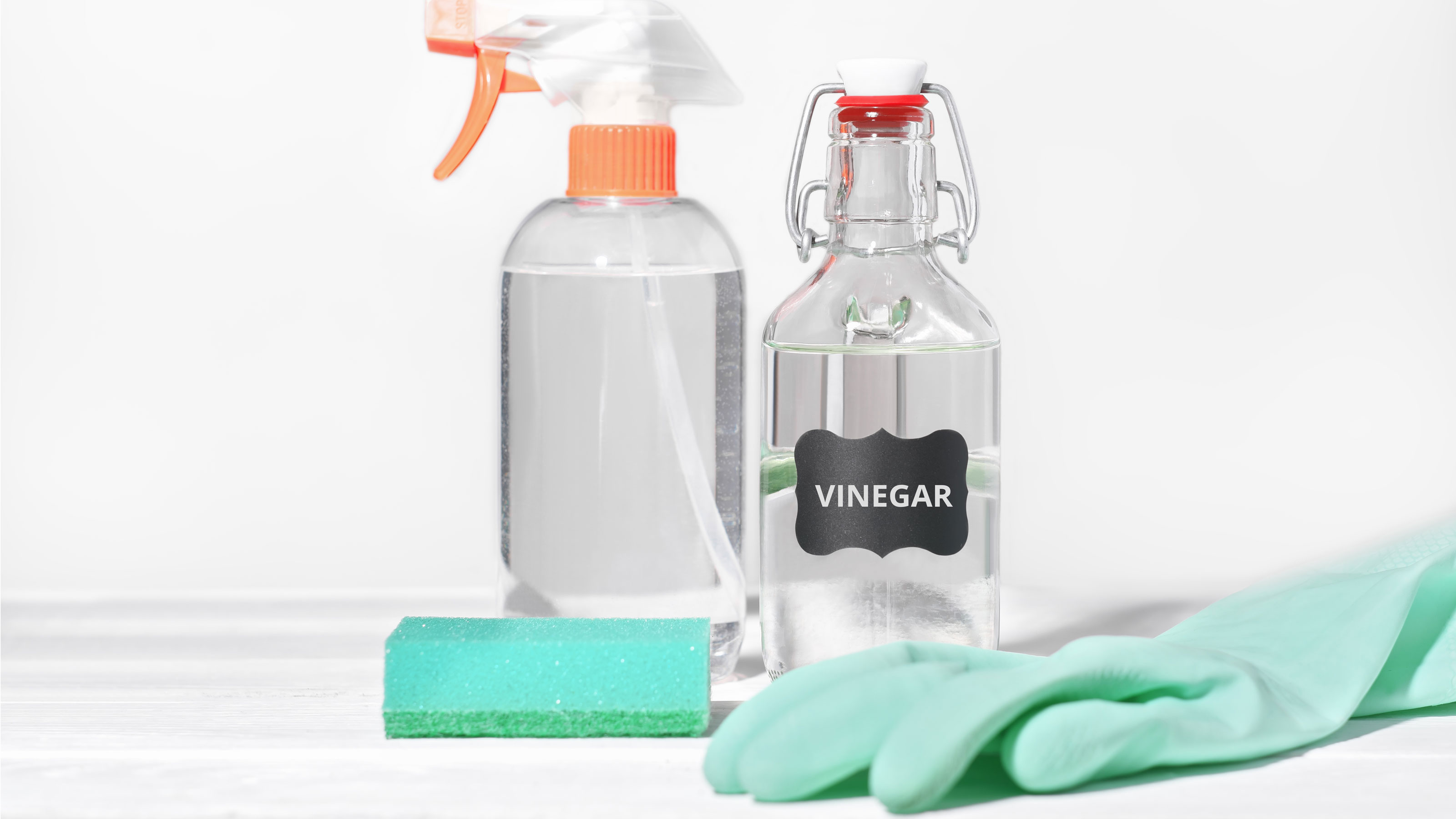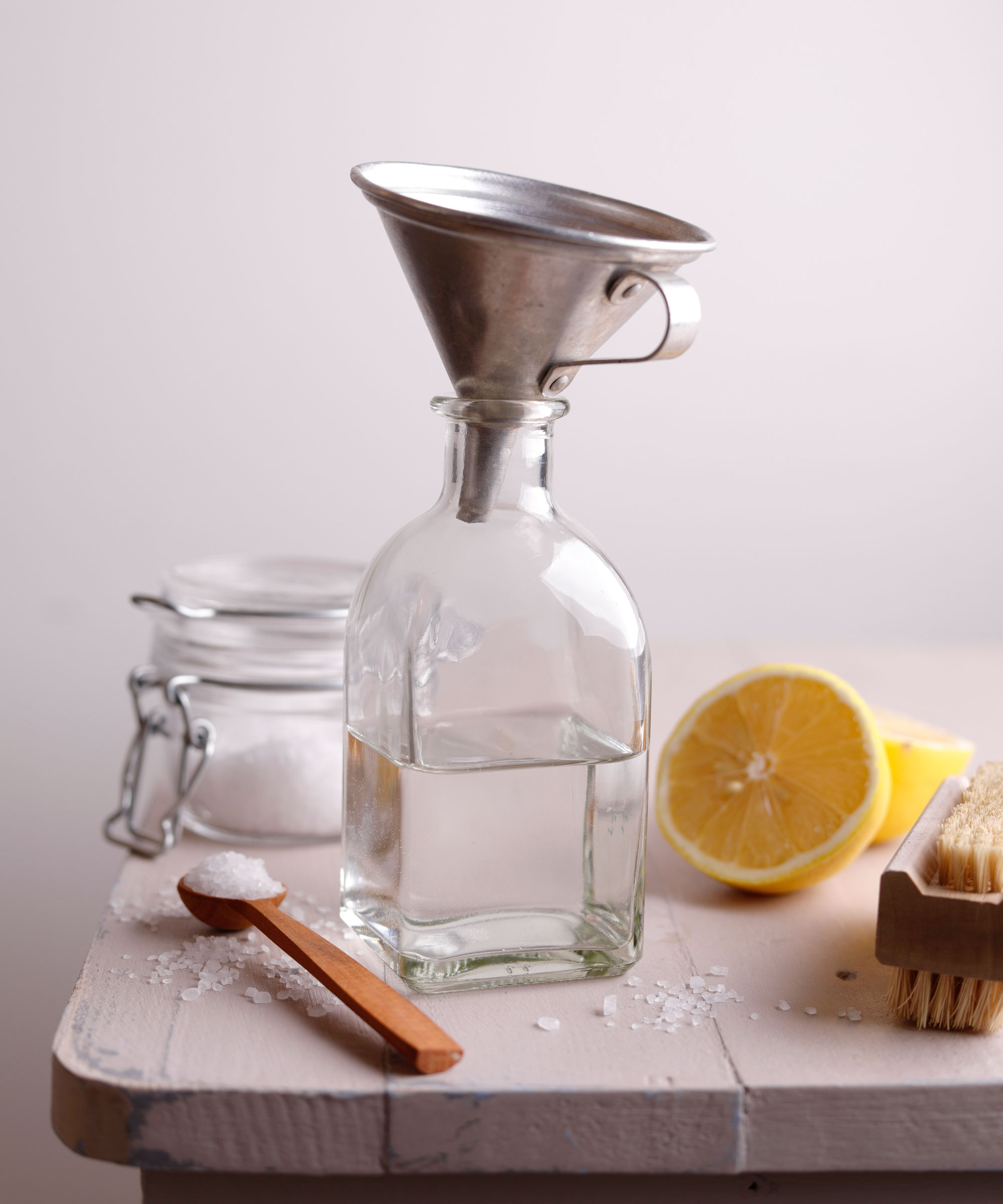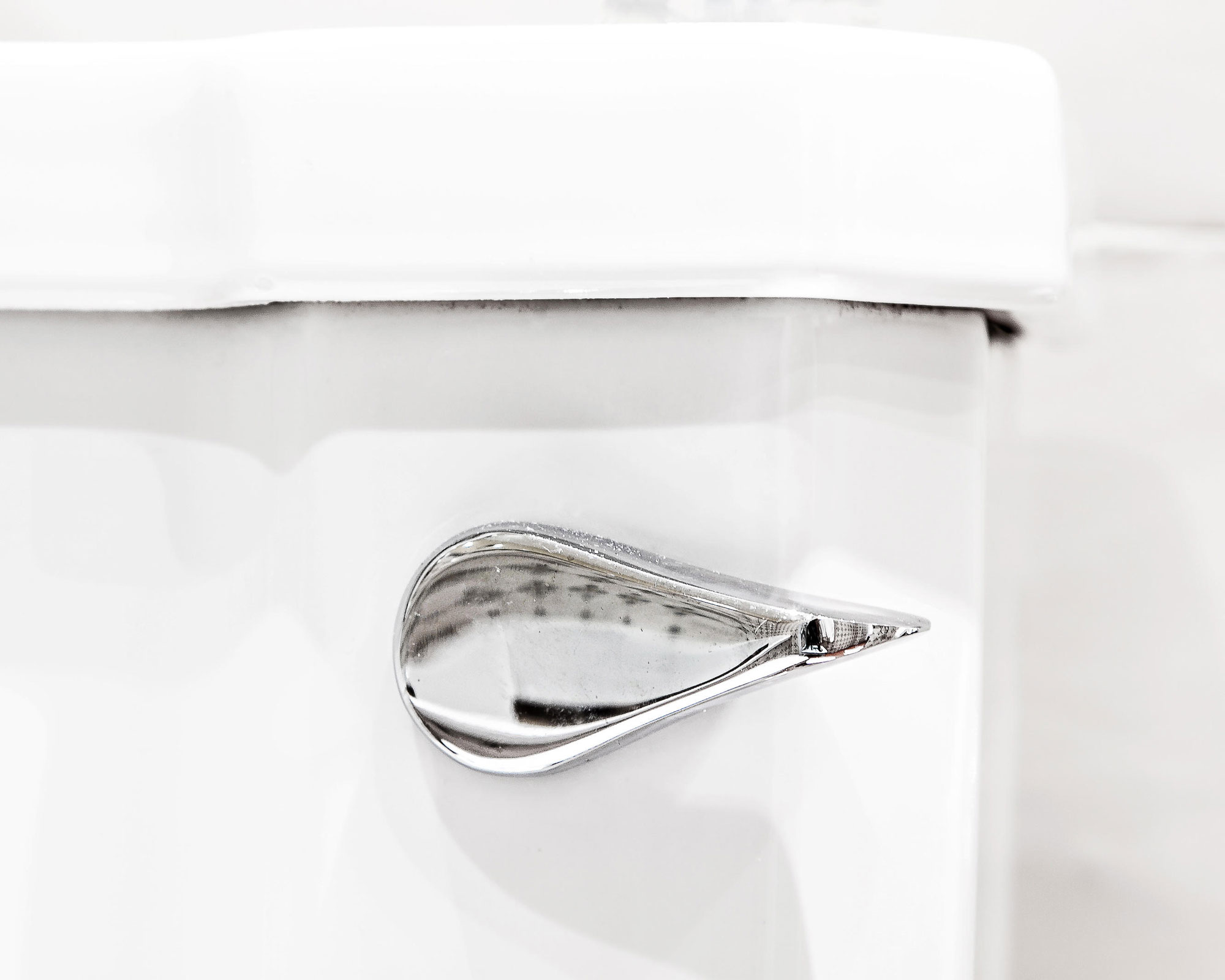
How often do you lift the lid of the toilet tank and peek inside? Due to the depth of the tank, various nasty substances like hard water deposits, mold, mildew, and bacteria can develop in this hidden spot, releasing odors.
Next time you deep clean a bathroom, clean the toilet tank with vinegar – it's easier than you might expect. It's also an eco-friendly method that cuts the time you spend cleaning and doesn't involve buying any commercial cleaning products.
Cleaning professionals and plumbers recommend cleaning with vinegar to remove buildup and stains from toilet tanks and other surfaces. Mix it with baking soda, however, and you could damage your tank and plumbing.
Clean a toilet tank with vinegar
We all love a fresh and squeaky clean bathroom, and it's always the areas we can't see that need particular attention. Follow the pro cleaning tips below to tackle stains with ease.

1. Turn off the water supply and drain the tank
First, turn off the water supply to stop the tank from refilling while you clean it. You'll need to locate the valve that supplies water to the toilet tank and turn it off completely. Then, flush the toilet until the tank is empty. If some water remains, you can try removing it with a cup or shop vac, at Amazon.
2. Fill the tank with a vinegar and water solution

Pour a solution of equal parts white vinegar, at Walmart, and water into the tank. Richard Dixon of Team Emergency Plumber recommends filling it 'to the overflow tube,' a hollow tube connected to the flush valve (often the overflow tube simply needs to be raised up above the water level to fix a running toilet).
'Be sure to cover any rust, mold, or algae that may be present in the tank,' adds Richard.
3. Leave it
If this is the only toilet in the house, this may not go down well, but leave the vinegar solution to sit for several hours – or overnight – to give it a proper clean. Around 30 minutes is the shortest length of time experts suggest, otherwise, it may not have as much of an effect.
'Give the vinegar 12 to 13 hours to sit in the tank,' suggests plumbing expert Richard Dixon.
4. Scrub with a brush
The power of vinegar's acetic acid should mean that very little scrubbing is needed, but for caked-on stains, use a brush to scrub the inside of the toilet tank. After the vinegar cleaning solution has had time to work, cleaning expert Karina Toner recommends using a pumice stone – pumice stones for toilet cleaning, available at Amazon, or a spare one from your bathroom cabinet. These are great for getting rid of hard water stains and are a good item to have in your cleaning cabinet.
5. Refill the tank
Turn the water supply back on and let the tank gradually fill back up, flushing the toilet a few times to rinse out the tank. Keeping the toilet tank clean is bound to help keep things in working order, avoiding situations like having to unclog a toilet or being faced with a toilet that won't flush.

FAQs
How long can you leave vinegar in a toilet tank?
Leave vinegar in the tank for several hours, ideally overnight. This allows the acetic acid in the vinegar to break down stains and deposits effectively.
Can you put vinegar and baking soda in a toilet tank?
'While vinegar can be an effective cleaning solution for toilet cisterns or tanks, it's important to avoid mixing it with other cleaning agents like baking soda, as this can create a potentially dangerous chemical reaction that can damage the toilet, cautions Hubert Miles, a home inspector at Home Inspection Insider. 'The chemical reaction creates a tremendous amount of heat which can crack the toilet,' he adds.
Instead, use vinegar on its own for the best results, or use a baking soda and vinegar combination on the exterior, seat, and bowl of the toilet.
Vinegar is a budget-friendly and eco-conscious option for this particularly unappealing cleaning job. As an alternative, you can use citric acid, at Walmart, which also scrubs up the interior of a tank with remarkable results.







